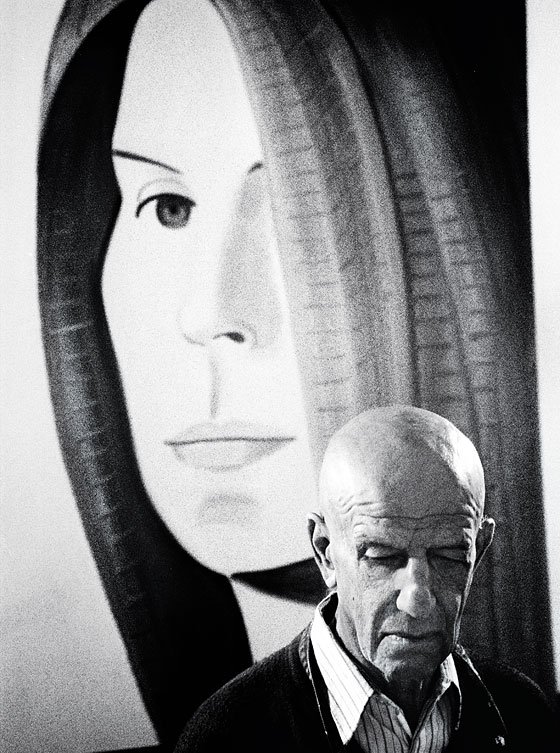
“Art was a fugitive occupation when I went into it,” says Alex Katz, who is toting his own massive canvases around his light-filled studio with the vigor of a much younger man. “I lived on crumbs in my twenties and thirties before it started moving.”
At 84, the New York painter remains alarmingly prolific: A retrospective dedicated to his prints opens April 28 at the Museum of Fine Arts in Boston, and this summer, Tate’s St. Ives outpost will host a survey of paintings, cutouts, and collage.
“A lot of people respect me,” he says. “But people used to really hate my work. As late as 1975, I had a show in Paris and people were screaming in the gallery. They were saying this is terrible art and I should go back to art school.” He shrugs. “It separated me from other artists.”
Today, Katz acknowledges where he’s appreciated (Europe) and where he is not (New York). “I think they are behind the times in New York. They are rapidly turning provincial on the museum level.” Things were feeling pretty stale with his gallery, too, which is why he left Pace in 2010, then signed with the younger, hipper Gavin Brown. “I was tired of Pace,” he says. “So I left. And about three-quarters of a year later, Gagosian and Gavin came in the same week. Gavin seemed to understand the paintings.
“Those are things that make journalism,” he says of gallery gossip. “The dealer is the crook, the artist is a phony, and the money is outrageous.” About that last, though, he agrees. “Weak people are corrupted by money. If you’re strong, you’re after something else.
“It’s hard for young artists. You’re an adult at 18, but for a painter it takes longer. You don’t really get it together until 35 or 45. In the 1950s, you had seven or eight years to experiment. But now you have to sell your first show and your second show and get a third show. And if you don’t, you’re a failure.” Then again, he says, “there are always people with new walls.”